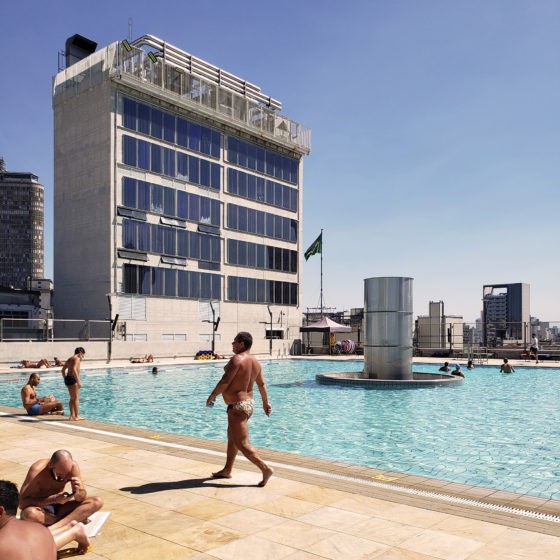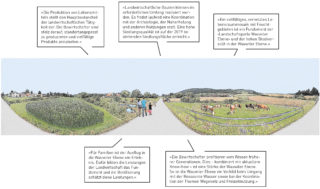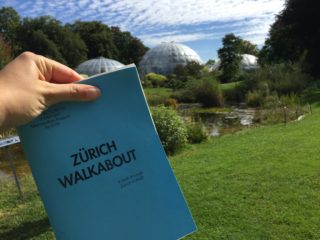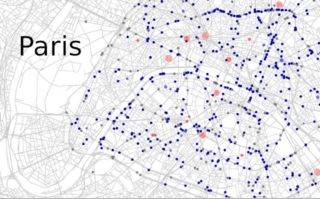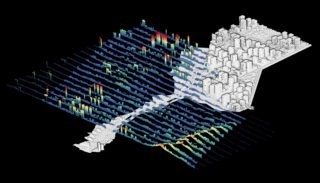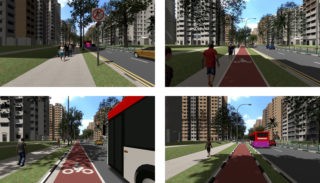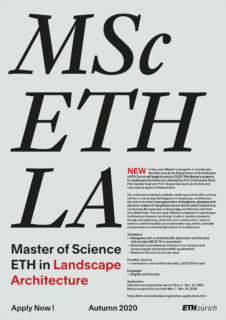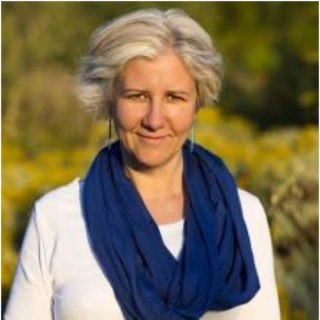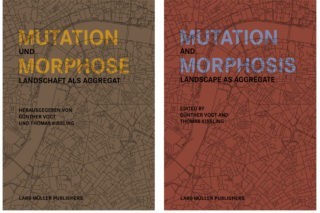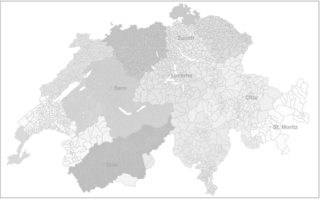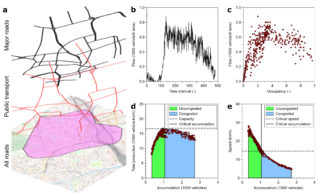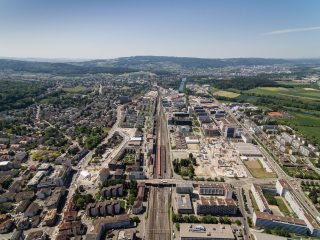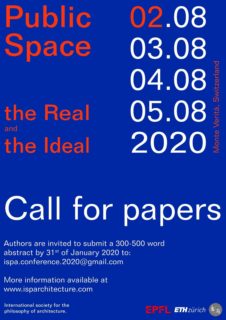Sehr geehrte Leserinnen und Leser
Die am NSL erforschten Methoden sind so divers wie deren Anwendungsgebiete: «Urban Commons» für neue urbane Sozialräume, «Backcasting» für partizipative Planungsprozesse, «real options» für schwer vorhersehbare städtische Infrastruktur-Anpassungen, das Gehen oder Spazieren für eine Gebietsanalyse, «Equasim» für agentenbasierte Modellierungen, «Punktwolken-Modellierungen» für die Umgestaltung von Landschaften und «virtuelle Realität» für die Planung von Radwegen…
Wir wünschen viel informatives Lesevergnügen!
Irina Davidovici, Nicole la Hausse de Lalouviere | chair of Tom Avermaete, History and Theory of Urban Design
In her book Governing the Commons (1990), political economist and Nobel prize winner Elinor Ostrom identified spaces and infrastructures as ‘common resources’ fostered by groups of citizens in order to resist top-down governance and commodification. Today, the notion of the ‘urban commons’ appears as an index for historians to look more closely at a number of collective actors and operations that have gone beyond the dominant agencies of the state and the market to develop new types of urban spaces. Our research examines the collective actors behind urban initiatives and spatial resources conceived as a ‘common good’.
Mehr
Sven-Erik Rabe, Enrico Celio | Professur Adrienne Grêt-Regamey, Planung von Landschaft und Urbanen Systemen (PLUS)
Partizipative Planungsprozesse leben von einer gemeinsamen Vision der Beteiligten. Sie hilft, den Prozess und die Diskussionen konstruktiv zu gestalten. Es bleibt jedoch offen, welche Schritte und Massnahmen zur Erreichung der Vision erforderlich sind. Am Fall Wauwiler Ebene wurden diese Fragen mit der Methode des Backcastings beantwortet und Handlungsschwerpunkte definiert.
Mehr
Dr. Claudio Martani | chair of Bryan T. Adey, Infrastructure Management
The societal needs for infrastructure change drastically over time depending on a large variety of factors, which are very difficult to predict. It is in the face of this massive uncertainty, that urban planners are expected to make infrastructure decisions. To minimize the service risks over time, the real options method is used to develop future-proofed urban areas.
Mehr
Dr. Nazlı Tümerdem | chair of Milica Topalović, Architecture and Territorial Planning
Can we, as researchers of the territory, still investigate and learn about our built and the unbuilt environments through direct experience? Can we rely merely on digital cartographies, or should we still be explorers who embark on journeys of discovery? We have tried to answer these questions by walking in the city in order to discover what is hidden, and by travelling the world of literature in order to arrive at critical insights.
Mehr
Sebastian Hörl, Miloš Balać | chair of Kay W. Axhausen, Transport Planning and Systems (IVT)
Agent-based models in transportation model individual travelers and their interaction in the transport system on a micro-level. A natural advantage of agent-based models are flexibility and the ability to model emergent behavior. Work at IVT has produced a new software package, eqasim, that drastically simplifies the design of scenarios for agent based models using open data.
Mehr
Philipp RW Urech | Future Cities Lab (FCL) | chair of Christophe Girot, Landscape Architecture
A new approach in landscape design uses point cloud modeling to integrate spatial, aesthetic and quantitative features of the landscape. The method is applicable in any location and thus makes it useful to a wide range of topics, whether in the context of cultural, agricultural or urban landscapes, with design challenges about rising water levels, flooding, forest fires, noise and air pollution, and urban heat island.
Mehr
Michael van Eggermond, Mohsen Nazemi | Future Cities Lab (FCL) | chair of Kay W. Axhausen, Transport Planning and Systems (IVT)
Researchers at the Future Cities Laboratory are using virtual reality (VR) in cycling experiments to reveal users’ cycling behaviour and preferences in different environments. These insights can help planners understand and quantify the impact of infrastructure improvements in setting guidelines and prioritization of new infrastructure.
Mehr
We offer a new two-year master’s programme in landscape architecture at the department of architecture of ETH Zurich with a focus on the design and planning of open spaces and landscapes. This master’s programme in landscape architecture, initiated by Prof. Teresa Galí-Izard, Prof. Christophe Girot and Prof. Günther Vogt, is the first and only such programme in Switzerland.
Mehr
Prof. Teresa Galí-Izard (*1968), zurzeit ausserordentliche Professorin an der Harvard Graduate School, Cambridge, USA, wurde zur ordentlichen Professorin für Landschaftsarchitektur am Institut für Landschaft und Urbane Studien (LUS, NSL) berufen.
Mehr
Der lebendige ländliche Raum ist eines der grossen Themen der Raumentwicklung. Hier treffen Tradition und wirtschaftliche Innovation, neue Rechtsgrundlagen und Emotionen aufeinander. Die 13. Landmanagement Tagung «Herausforderungen der baulichen Entwicklung im ländlichen Raum» bot den aktuellen und vielfältigen Themen aus Verwaltung, Forschung und Praxis eine Plattform.
Auch der Schwerpunkt der 14. Tagung Landmanagement ist bereits bekannt: am 10. November 2020 steht die Erschliessung und Vernetzung der multifunktionalen Landschaft im Fokus. Sven-Erik Rabe; Planung von Landschaft und Urbanen Systemen (PLUS)
Marc Angélil hat die Architekturlehre an der ETH entscheidend mitgeprägt, sowohl als Professor wie auch als Vorsteher des Departements. Seit Jahren forscht er zu politischen, sozialen und ökonomischen Treibern der globalen Verstädterung. Im Rahmen seiner Emeritierung wirft er nochmals einen kritischen Blick auf aktuelle Urbanisierungstrends.
Gespräch mit Prof. Dr. Marc Angélil im ETH Life.
Dies ist eine Auswahl. Eine vollständige Liste finden Sie in der ETH Zürich Research Collection.
Günther Vogt, Thomas Kissling
Wer aus der Distanz betrachtet, was wir «Landschaft» nennen, wird erkennen, dass es sich dabei um ein Artefakt handelt, um einen Lebensraum, von Menschen geschaffen als Teil der gebauten Stadt. Die Gestaltung dieses Raums ist eine Disziplin von zunehmender Bedeutung. Günther Vogt hat sich mit VOGT Landschaftsarchitekten und der Professur an der ETH Zürich ein Instrumentarium geschaffen und eine Arbeitsweise entwickelt, welche von der grossmassstäblichen Landschaft bis zum kleingliedrigen öffentlichen Stadtraum alle Dimensionen der gestalteten Umwelt einbeziehen.
Mehr
Amin Khiali-Miab, Maarten J. van Strien, Kay W. Axhausen, Adrienne Grêt-Regamey
The fast pace of urbanisation may benefit or be detrimental to the socio-economic status of urban areas. Understanding how the configuration of urban areas influences the socio-economic status of their inhabitants is of crucial importance for urban planning.
Mehr
Allister Loder, Lukas Ambühl, Monica Menendez, Kay W. Axhausen
Traffic in an urban network becomes congested once there is a critical number of vehicles in the network. To improve traffic operations, develop new congestion mitigation strategies, and reduce negative traffic externalities, understanding the basic laws governing the network’s critical number of vehicles and the network’s traffic capacity is necessary.
Mehr
Dies ist eine Auswahl. Alle Artikel finden Sie auf der Seite Aktuell.
Prof. David Kaufmann, Dr. Markus Nollert, PD Joris Van Wezemael | Raum- und Landschaftsenwicklung
Politik und Planung | Raum und Technologie | Design und Raumplanung
Mehr
Call for papers by 6th January 2020.
The aim of the conference is to stress ideas and ideals on public space, both in architecture, landscape architecture, urban design, as well as in (political) philosophy, against the background of the continuous development of technology, from smart phone to smart city.
5th Biennial Conference of the International Society of the Philosophy of Architecture, to be held August 2nd to August 5th 2020, Monte Verità (near Locarno), Switzerland. Co-organized by the ETH Zurich, chair of Prof. Tom Avermaete, and EPFL, Laboratorium Van Gerrewey.
Redaktionsteam
Isabelle Fehlmann, Institut für Landschaft und Urbane Studien (LUS), Landschaftsarchitektur
Melanie Fessel, Institut für Landschaft und Urbane Studien (LUS), Städtebau
Claudia Gebert, Koordinationsstelle NSL, Chefredaktion
Metaxia Markaki, Institut für Landschaft und Urbane Studien (LUS), Städtebau
Joe Molloy, Institut für Verkehrsplanung und Transportsysteme (IVT)
Bettina Weibel, Institut für Raum- und Landschaftsentwicklung (IRL)
